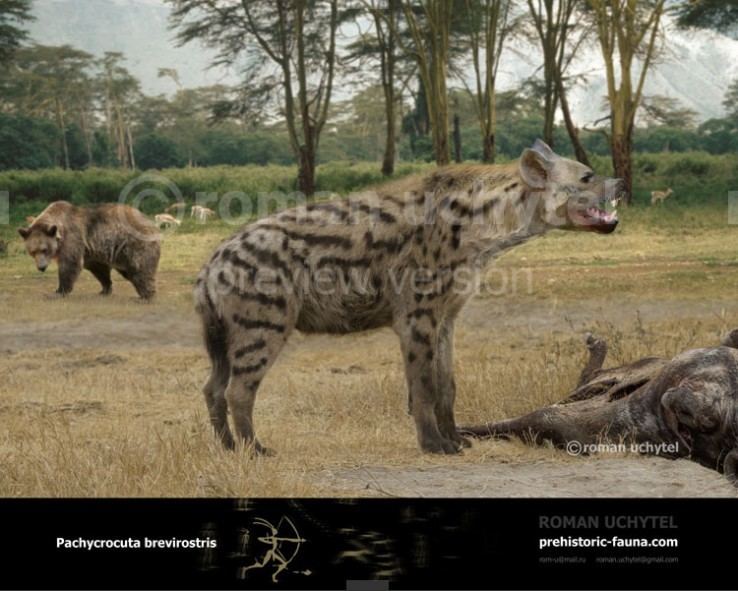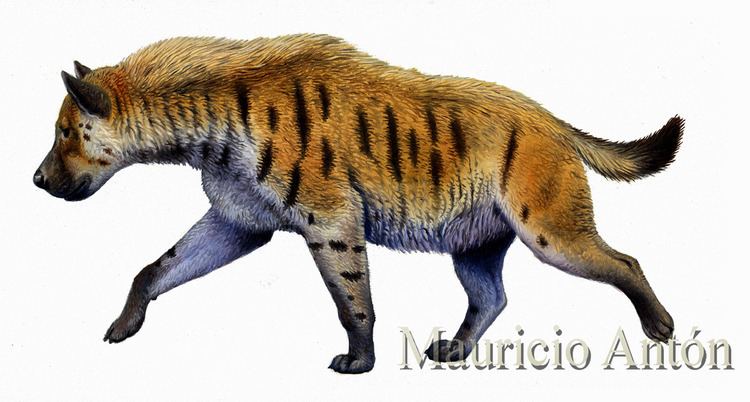Family Hyaenidae Rank Genus | Phylum Chordata Order Carnivores | |
 | ||
Similar Chasmaporthetes, Carnivores, Megantereon, Cave hyena, Homotherium | ||
Pachycrocuta was a genus of prehistoric hyenas. The largest and most well-researched species is Pachycrocuta brevirostris, colloquially known as the giant hyena as it stood about 90–100 cm (35–39 in) at the shoulder and it is estimated to have averaged 190 kg (420 lb) in weight, approaching the size of a lioness, making it the largest known hyena. Pachycrocuta first appeared during the late Pliocene about 3 million years ago and became extinct during the middle Pleistocene, 400,000 years ago.
Contents

Fossils

Fossil remains have been found broadly in Eurasia and southern and eastern Africa. Most material consists of fragmented remains, usually of the skull, but a cache of very comprehensive bone material was unearthed at the famous Zhoukoudian site, which probably represents the remains of animals using these caves as lairs for many millennia. At the western end of their former range, at Venta Micena in southeastern Spain, a huge assemblage of Pleistocene fossils also represents a den.

Other proposed species, P. robusta and P. pyrenaica, are less well researched; the former may simply be an exceptionally large European paleosubspecies of the brown hyena, Hyaena brunnea. Sometimes included in this genus (as Pachycrocuta bellax) is the extinct giant striped hyaena, Hyaena bellax.
Behaviour
It was probably a small-pack hunter of large animals (up to deer size and occasionally larger). Research by anthropologists Noel Boaz and Russell Ciochon on remains of Homo erectus unearthed alongside Pachycrocuta at the Zhoukoudian site attributed scoring and puncture patterns observed on hominin long bones and skulls—originally thought to be signs of cannibalism—to predation by Pachycrocuta. Pachycrocuta may have also scavenged for food, probably preferentially so, because it was a heavyset animal not built for chasing prey over long distances. In this respect it would have differed from the spotted hyena of today, which is a more nimble animal that, contrary to its image as a scavenger, usually kills its own food but often gets displaced by lions. Apparently it was ecologically close enough to the smaller (but still large) relative Pliocrocuta perrieri that they are never found as contemporary fossils in the same region.
It has been proposed that Pachycrocuta was out-competed and driven to extinction by the spotted hyena, which was formerly present in Eurasia as well as Africa.
